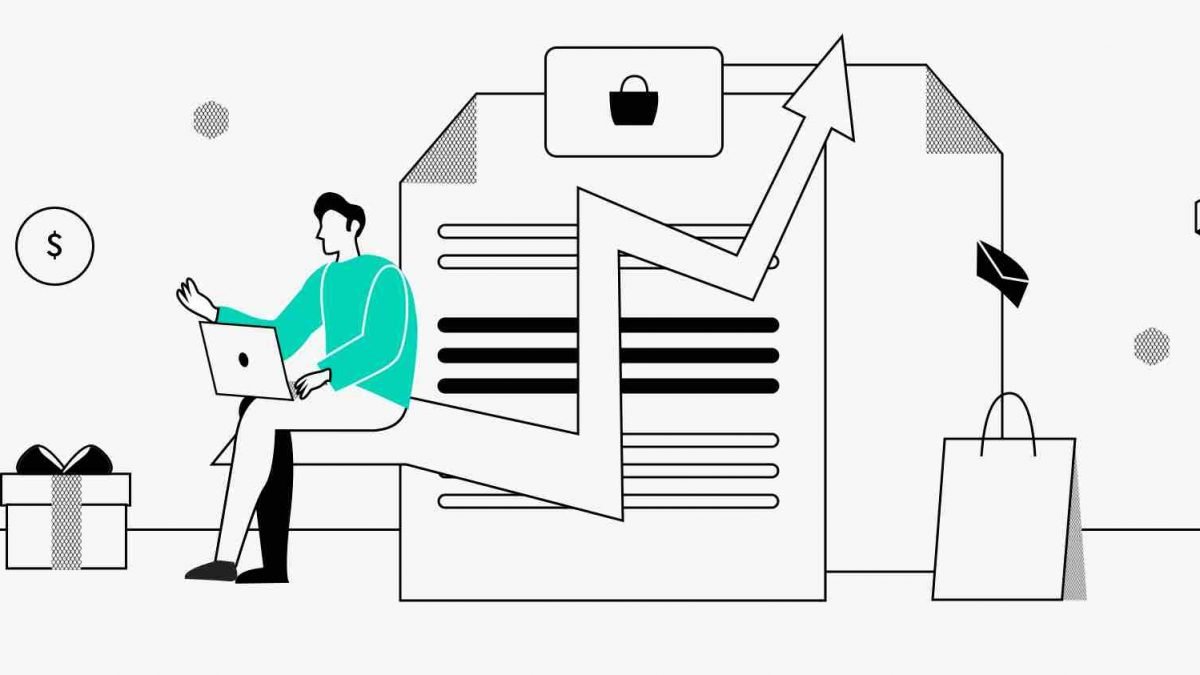Welcome to the Marketplace Masterclass. In this three part series I will tell you all about creating a marketplace business model, designing and developing a marketplace as well as scaling and marketing it. You will learn what are the different types of marketplaces with real-life examples and how to build your product to succeed.
All Articles In This Series:
- How Do Marketplaces Like Etsy And Fiverr Make Money?
- How To Design & Develop A Marketplace?
- A Guide To Scaling, Growing & Maintaining Your Marketplace
Setting Your Expectations
Before we dive into growing the marketplace, we first need to talk about growth itself. Clearly understanding what kind of growth to expect is important to set realistic expectations. Building marketplace businesses takes more time than other online businesses. As startup guru Paul Graham writes, the most common reason for startup companies to die is a loss of faith in their business. This is especially common for marketplaces, where it may seem like the business is not going anywhere for a long time. After all, it took 4 years before Airbnb really took off.
Generating & Supplying Traffic
The main role of the marketplace’s owner is to generate reach and supply traffic. The initial phase in effectively developing the marketplace is planning a framework that will inspire and motivate the two sides, a vendor and a client, to utilize the platform for their own advantage. While thinking about the advanced marketplace, the systems of adding an advantage are noticeable from the initial visit. A marketplace should provide an extra benefit that satisfies the requirements of both the provider and the client. Without that, it will be extremely hard to draw in the target audience. To give you an example of a benefit like this I’d like to tell you about what we did with our own product Sneak. We added tools for sellers to track their stock, analyze prices and plan future restocks. For buyers we added tools to analyze trends and plan future purchases.It’s important to include such mechanisms in the first version of your marketplace because it’s the best way to draw in your target users and engage both sides of the transaction.
Reaching Target Users
The next step in growing the marketplace is reaching potential users and providing them information on the advantages of a newly launched platform. The marketplace owner has to demonstrate that the platform meets the expectations of sellers and buyers.
The marketplace will always be expected to:
● Earn money and increase income. The most important thing for every business.
● Save time. The time is money as well. Finding a trustworthy supplier or seller saves time and is something that customers will appreciate.
● Automate processes and logistics. During robotization and digital transformation providing a tool that automates repeatable processes is something that your clients will love.
● Be credible. Being sure that the service will be delivered on time can be a business game-changer and can help you dominate competitors.
As we all know, it is quite a challenge and indeed takes a lot of effort to build a marketplace. But the real challenge awaits still after that. That is – to scale that marketplace. Scaling means choosing the right plan to allocate and optimize the resources properly to grow the business. In order to experience a long-lasting success, there is no alternative for it.
Scaling The Marketplace
How to scale up your marketplace? Here’s what you need to focus on:
1. Emphasize The Hardest Side First
Every marketplace needs to generate two sides for itself – supply-side and demand-side. Between these two, figure out which one is harder for your marketplace. If you can bring enough of that side onboard, the other side will be 2-10X easier to get.
2. Focus On Niche Marketing
When starting out, it’s smart to target the small groups first instead of investing money in the broader markets at once. Make sure it works, test it on the niche targets and then start scaling it.
For example: In early 1995, Craig Newmark started Craigslist as an email distribution service among his friends. And now, it is a classified advertisements website covering 70 countries.
3. Extend The Scope Of Supply
To get started right away, try inflating the supply side of your market. As people usually return to a market where they have many options, show them that you have a wide range of supplies on hand.
4. Inspire Customer Trust
When you add more inventory, you are more likely to attract more users. Now you have to turn them into your customers. In this case, a certain level of trust is required. Transparency, a system of reviews and assessments, insurance – these are the things that people love to see in the market.
5. Focus On One Feature At A Time
To make a significant entrance highlighting one feature may turn out to be effective. Offer people the focused function of a business solution. Then enter other offers.
6. Don’t Pivot Too Early
Scaling the market is not an easy task. Sometimes it takes a long time to visualize the result. Therefore, don’t change your plans too often if you don’t see an immediate result. Remember that building a solid foundation takes time.
7. Acquire High-value Users
Find the most valuable users for your business and reach them first. Other users will be influenced by them. Ultimately, you will get a huge user base.
8. Pay More To Earn More
When possible, make money on the most valuable side of the market (supply / demand side). Pay buyers or sellers – anyone who is more valuable to your market to encourage them to participate. Paying before earning is not a bad approach, but rather a trick designed to trigger user activity.
9. Reach Supply And Demand Side At Once
Building a community of both buyers and sellers at an early stage is quite a difficult task, look for opportunities where you can meet both of them at once. Put simply, search for a user group that can act as both a buyer and a seller.
10. Build A Community
Having a strong network or community is highly beneficial. This is a great way to get closer to people, stimulate activity, exchange knowledge. Try to generate and regulate your community by organizing meetings.
11. Stay Unique
To stand out from the competition, you need to target buyers with unique offers. Understand and follow the buyer’s attitude.
12. Use The “Surprise and Delight” Method
Show that you care about your customers by presenting them with a surprise gift or coupons for use in your marketplace, or simply with a personalized thank you letter. These little gestures have a huge impact on people and increase user activity.
13. Set Limits, Create Emotions
Setting a maximum purchase limit or a purchase time limit generates great emotions among customers. This triggers FOMO (or Fear of Missing Out) and leads them to a purchasing competition.
Marketing And Promotion
Running a marketplace is about gathering traffic and building your reach. And this is impossible without implementing a good performance marketing strategy. As we now have an organic scaling method, let’s dive into paid customer acquisition because good tactics or one-off actions are not enough to fully support your marketplace.
SEO & SEM
Search engine optimization and search engine marketing is one of the most important acquisition channels because Google is like a door to the entire Internet and is the best long-term source of traffic. Most people looking for ways to solve their problems are using Google, so the marketplace owner has to carefully select keywords and build a strong SERP presence on those selected phrases.
Email Marketing
eCommerce email marketing is the art and science of using email to generate sales in your store. This can be simple, such as sending an email to people who are abandoning their carts. Or complex, like multiple campaigns that work together to increase sales exponentially. At the end of the day, when you look at promotions, deals, coupons for free shipping, and emails to support potential customers, email marketing is all about building relationships.
Social Media Ads
Imagine an advertising tool that can help you reach your ideal customers based on what they like, their interests and their behavior. A tool that allowed you to save time and money by optimizing ad serving to reach those most likely to convert with your message. This is what you get with Facebook, Pinterest, Snapchat, LinkedIn, Twitter – platforms used by many eCommerce entrepreneurs and marketers, especially those who are just starting out but don’t have a lot of advertising experience or a large advertising budget. Anyone can drive the growth of their business with Facebook Ads as long as they are willing to learn the basics.
Measuring The Success Of Your Marketplace
Measuring and evaluating metrics is key to the success of any digital business. While the metrics for traditional single vendor online store models are well known to the public, the market models require a new set of KPIs. By tracking these market metrics, you can identify areas where the market is operating effectively and where improvements are needed, as well as how to adjust the overall market to optimize performance.
Gross Merchandise Value (GMV)
Gross Commodity Value (GMV) is the total value of all products or services sold in your marketplace during a given period. In short, it represents how much money has flowed into the platform over a period of time. Marketers and managers should keep an early track of this metric and review it often : GMV’s growth rate is a great way to measure actual marketplace growth.
Here’s how to calculate the GMV:
Buyer & Seller Liquidity
In a marketplace model, where a brand connects buyers and sellers, it becomes paramount to calculate how liquid (or “transactional”) this engagement is. Indeed, liquidity is a vital metric for your online marketplace. It can be calculated both on the buyer side and the seller side. Seller liquidity is the percentage of listings that result in transactions within a specific time period. For instance, seller liquidity for a marketplace like Etsy would refer to the percentage of products available that are sold within a month.
Here’s how to calculate it:
Buyer liquidity is the probability that a visit will turn into a transaction. This is fairly easy to calculate: you take the number of visits you get within a certain time period and look at how many transactions you have in that same period.
Here’s how to calculate the Buyer Liquidity:
Take Rate
While GMV can provide good visibility into market size, it does not represent actual revenues for the market owner. Indeed, to get an accurate picture of this, you should also consider your takeover ratio, which is the average commission the market charges on sales from third-party sellers (in different categories). High selling rates mean that the market provides buyers and sellers with a strong value proposition, and has a solid foundation to negotiate with sellers.
Here’s how to calculate the Actual Sales via Take Rate:
Average Order Value (AOV)
Another market indicator you need to calculate is the Average Order Value (also known as Cart Size or Value Per Trade). This measure is especially useful for understanding the unit economy of the market and staying at the top of the CAC (customer acquisition cost). Knowing how much a customer is willing to spend on average will give the market manager a good indication of how much to spend to acquire that customer. It also gives insight into the buying pattern: typically a high AOV relates to highly scheduled one-off purchases, while a low AOV relates to potentially more impulsive and repetitive purchases.
Here’s how to calculate the Average Order Value:
Net Promoter Score (NPS)
Net Promoter Score is a measure used to measure customer feedback from various industries. In a market environment where buyers may come and go, it is especially important to understand the likelihood of their becoming advocates or critics.
Here’s how to calculate NPS:
After the purchase, the market manager can send an email to the customer with one question: “How likely is it you will recommend us to a friend or colleague?” People with a score above 8 are considered “promoters”, while those with a score below 7 are “critics”.
What makes us experts on this topic?
Well, I am the CEO of INVO and together with my team we build digital products, including marketplaces. We have made our clients millions in revenue from our web and mobile products. What you’ve learned from this episode is backed up by our experience and knowledge of our entire product team.
If you’d like to learn more about marketplaces, you can download our free eBook. You can also watch this series on YouTube.
If you’re looking for a team of experts to build and launch your online marketplace business – contact us!






